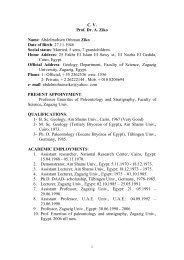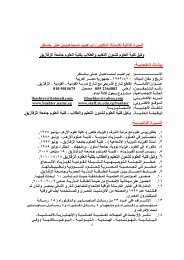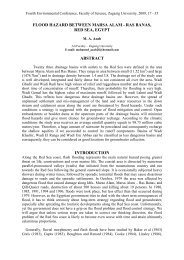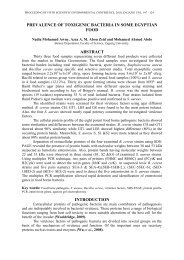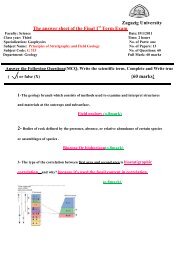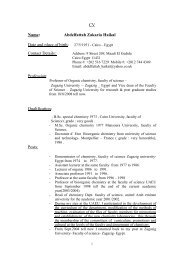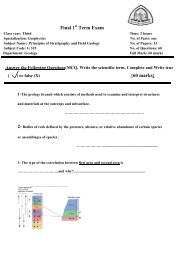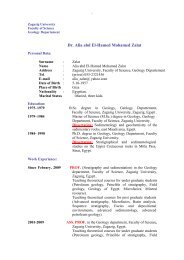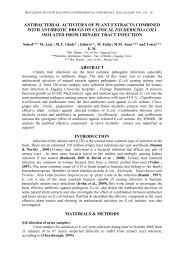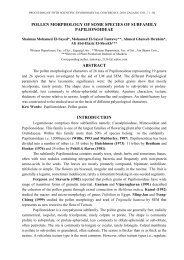GEOPHYSICS LETTERS
GEOPHYSICS LETTERS
GEOPHYSICS LETTERS
- No tags were found...
Create successful ePaper yourself
Turn your PDF publications into a flip-book with our unique Google optimized e-Paper software.
Ghalib M. et. aL 572- Interpretation of reefs by seismic criteria:The recommended procedure for the interpretation of carbonate buildupsfrom a grid of seismic data follows the seismic stratigraphictechniques (Bubb and Hatlelid, 1977), which involves:- Seismic sequence analysis: it is based on the identification ofstratigraphic units composed of a relatively conformable succession ofgenetically related strata termed depositional sequences; the upper andlower boundaries of depositional sequences are unconformity or theircorrelative conformities (Mitchum et at, 1977- part 2).- Seismic facies analysis: it is based on the delineation and interpretationof reflection geometry, continuity, amplitude, frequency and intervalvelocity, as will as the external form and associations of seismic faciesunits within the framework of depositional sequences (Mitchum et at,1977- part 2).The Hammam Faraun sequence is the important sequence in thepresent study. Firstly the sequence boundaries are delineated on allintersected lines in the available grid. The complete correlation throughthe seismic grid will produce a three dimensional framework ofsuccessively stratified seismic sequences.The second step in the reef interpretation is the analysis of reflectionconfiguration and other seismic parameters, such as amplitude andcontinuity within Hammam Faraun seismic sequence. These parametersare delineated as seismic facies units, which are three dimensionalgroups of reflections whose elements differ from those of adjacent units.The next step in the reefs interpretation is based on the special criteria bywhich we can recognize the reefs or build-ups on the seismic sections.The seismic criteria that can identify the reefs on seismic sectionsdepend primarily on the difference in compaction between reefs and theadjacent strata and on that the reefs have higher velocity contrast withthe overlaying rock, often a lot of higher. This lead to high acousticimpedance contrast between reefs and the overlaying strata, which leadto high reflectivity at that boundaries, when it is not affected by presenceof hydrocarbons especially gas which may lead to weak reflectivity.Also the reefs differ in their composition from the adjacent strata (facieschange), which are reflected as difference in reflection configuration



